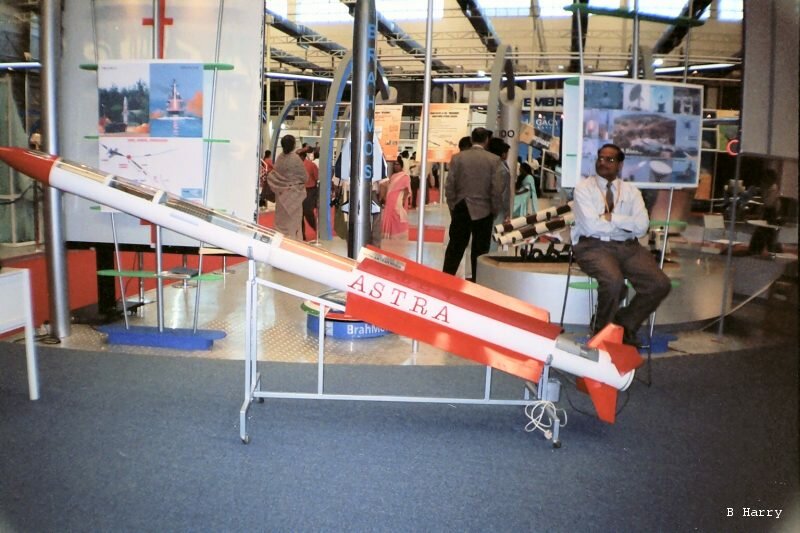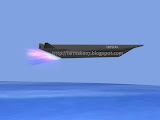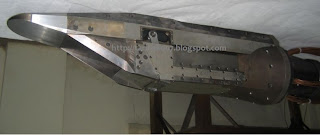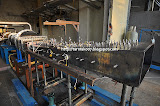
can any on conform the above missiles on Rambha are astra missiles

VinayG wrote:
can any on conform the above missiles on Rambha are astra missiles
CJ: the bolded part is impossible. How will a Mach 6 vehicle release a < Mach 1 kill vehicle? That calls for some serious decelerationchackojoseph wrote:I have not read the entire debate, just skimmed it.
A2's can be used for a ASBM role as A2's are not the kill vehicle. They are the delivery vehicles. This is how Chinese are using BM's. They probably might have decided the radii of action (maybe 500 nautical miles) and covered it with required assets. So, a BM re-enters, ejects the kill vehicle which is expected to be subsonic. Upon release of the kill vehicle, the spread assets will guide them to the nearest possible point and release the munition.
India can also do it for desired radii of action from Indian shores. For example, the farthest possible distance a carrier can operate to launch air assets.
It cannot kill a carrier beyond the radii of action.
Kanson: can you plz share one of these reports that talk about a terminal seeker for Shourya or BMs? Not that I disbelieve you, but I don't remember reading about it.Kanson wrote: It is reported in our regular news paper and its internet editions about the presence of terminal seeker for Prithvi and Agni missiles. Yes, as you said, sea clutter could be problem. We only know that these missiles do have terminal seeker but we dont know about the types and its capabilities.
+1.Philip wrote:If ASTRA is going to first tested with ground firings for a year before it is testes in an Air-to-Air mode,then it would be worthwhile for the IA and IN to make use of the tests for their own future versions of SAMs ,derived from the same missile.Such an approach could save upto one year too in flight tests if all 3 services were aboard during the ground testing phase.
Hmm, just release it in the reverse direction. Assuming the kill vehicle has some propulsion which can provide for a Mach3 relative velocity, it needs to be launch in reverse to slow it down and then it pretty much can start acting like a cruise missile.Prem Kumar wrote:CJ: the bolded part is impossible. How will a Mach 6 vehicle release a < Mach 1 kill vehicle? That calls for some serious decelerationchackojoseph wrote:I So, a BM re-enters, ejects the kill vehicle which is expected to be subsonic. Upon release of the kill vehicle, the spread assets will guide them to the nearest possible point and release the munition.
SR-SAM requirements are huge:Prem Kumar wrote:+1.Philip wrote:If ASTRA is going to first tested with ground firings for a year before it is testes in an Air-to-Air mode,then it would be worthwhile for the IA and IN to make use of the tests for their own future versions of SAMs ,derived from the same missile.Such an approach could save upto one year too in flight tests if all 3 services were aboard during the ground testing phase.
Which is why all this hoopla about Maitri & MBDA collaboration beats me. Maitri should be an Astra-based SR-SAM.
tejas wrote:I have a feeling that is an old pic as the Astra was supposedly updated and the long cruciform control surfaces jettisoned. The updated version is much more TFTAed and AMRAAM looking


As per this latest tarmak007 article, there are actually two versions of Astra being developed: (1) 50km Astra Mk.1 and (2) 100km Astra Mk.2 (redesigned body). It sounds like there were issues with the old design and it is being redesigned as in the pic you have shown.tejas wrote:I have a feeling that is an old pic as the Astra was supposedly updated and the long cruciform control surfaces jettisoned. The updated version is much more TFTAed and AMRAAM looking
...
...
The Rs 955-crore project was sanctioned in 2004 to develop two versions (Mk-1: 50 km & Mk-II: 100 km) for the Indian Air Force (IAF).
The programme ran into rough weather for an year owing to controllability issues and higher than expected rolling moments at high angles of attack. The new symmetric configuration fully addresses these concerns and the whole of 2012 will be dedicated to testing a number of missiles from the ground to prove the configuration and engagement envelopes. Two subsystems had also to be re-designed and re-packaged to meet the new system configuration. "There are too many conflicting requirements for an air-to-air missile such as stability and safe release coupled with high agility during engagement against the target aircraft. We have sorted all the issues now," sources said.
...
http://articles.timesofindia.indiatimes ... kg-warheadPrem Kumar wrote:Kanson: can you plz share one of these reports that talk about a terminal seeker for Shourya or BMs? Not that I disbelieve you, but I don't remember reading about it.Kanson wrote: It is reported in our regular news paper and its internet editions about the presence of terminal seeker for Prithvi and Agni missiles. Yes, as you said, sea clutter could be problem. We only know that these missiles do have terminal seeker but we dont know about the types and its capabilities.
AndPrithvi-II has a strike range of 250 km to 350 km and the capability to carry 500 Kg to 1000 kg warhead. It has a length of nine meters and a diameter of one metre. The missile, weighing around 4.6 tonne, uses an inertial guidance system with reasonably good accuracy and the warhead uses a radar correlation terminal guidance system.
what i think is Astra MkI can still get that 80 KM rang if it is launched from higher altitude.tejas wrote:Lots of confusion here guys. Srai, if you look at the 2 pics from Tarmak007, please notice that the cruciform surfaces are shorter and have been moved proximally from pic 1 to pic 2. That I thought was the initial redesign of the missile. The absence of the cruciform surfaces was, I thought the final prototype. This is the first I am hearing of a 50 km (much too short legged) version. The initial missile was supposed to be an 80 km range head on missile. This was to be upgraded to least 100 km. So right now I am
.it can cover 110 km when launched from an altitude of 15 km, 44 km when fired from an altitude of eight km and 21 km when the altitude is sea-level
Whats the problem in ejecting a kill vehicle? Arent' sats ejected the same way?Prem Kumar wrote:CJ: the bolded part is impossible. How will a Mach 6 vehicle release a < Mach 1 kill vehicle? That calls for some serious decelerationchackojoseph wrote:I have not read the entire debate, just skimmed it.
A2's can be used for a ASBM role as A2's are not the kill vehicle. They are the delivery vehicles. This is how Chinese are using BM's. They probably might have decided the radii of action (maybe 500 nautical miles) and covered it with required assets. So, a BM re-enters, ejects the kill vehicle which is expected to be subsonic. Upon release of the kill vehicle, the spread assets will guide them to the nearest possible point and release the munition.
India can also do it for desired radii of action from Indian shores. For example, the farthest possible distance a carrier can operate to launch air assets.
It cannot kill a carrier beyond the radii of action.
It is more to do with basic physics than concepts IMHO.chackojoseph wrote:Whats the problem in ejecting a kill vehicle? Arent' sats ejected the same way?Prem Kumar wrote:
CJ: the bolded part is impossible. How will a Mach 6 vehicle release a < Mach 1 kill vehicle? That calls for some serious deceleration
^^^Prem Kumar wrote:C
VikramS: what you are talking about is easier said than done. Who is going to impart the deceleration to the kill vehicle? The last stage warhead is un-powered. A tremendous amount of energy will be required by the parent vehicle to eject a kill vehicle in the opposite direction with the required momentum.







Comparing this news with an older post form November 29 below, it looks like DRDO team has achieved the high temperature materials for Mach 6.5 and the engine design. The flight-worthy HSTDV in now in fabrication phase. Brahmos team is working on engine design phase with the flight-worthy high temperature materials. Nice to have some competition.The scramjet-integrated vehicle is mounted on top of an already proven Agni missile booster motor and protected by aerodynamic fairings. The solid booster injects the hypersonic vehicle at the desired altitude of 32 km and Mach number of 6.5. The aerodynamic fairings are separated and the hypersonic vehicle is also separated from the booster. After separation, the scramjet engine is ignited and the vehicle cruises for a short duration of 20 seconds. High temperature materials are used for the engine and airframe construction.
The scramjet integrated vehicle has been designed considering the aero-propulsion interactions. The performance analysis indicates the capability of the vehicle to generate adequate positive thrust margin ensuring cruise condition. “The materials have been identified, thermo-structural design completed and the airframe also fabricated. A scramjet combustor also has been designed and tested in connect pipe mode test facility at DRDL and the performance has been satisfactory, so far. A flight- worthy engine using high temperature resistant materials is under fabrication," sources said.
PratikDas wrote:SaiK ji, the kinetic energy of the Brahmos-2 at Mach 7 would be 6.25 times greater than the kinetic energy of Brahmos at Mach 2.8, assuming the two missiles have the same mass. This will probably not be the case though. IF one were to speculate, even if Brahmos-2 is half as heavy as air-launched Brahmos (2,500 kg) then the Brahmos-2 would still have 3.25 times the kinetic energy of air-launched Brahmos.
This is interesting:
New BrahMos can cover 290 km in two minutesSo what has been tested so far might be the engine structure, both the exterior shape and the interior cavities, with heavier materials which can be machined to get the desired shape. This design is to be tweaked for the attempt at Mach 7. These materials might not last the flight duration due to the intense heat though, so coming up with ones that do would be the next task.“We have completed tests up to Mach 6.5,” BrahMos Aerospace Private Limited chief executive officer and managing director A. Sivathanu Pillai said in Chennai. The target is to achieve Mach 7, he added. However, for BrahMos to achieve hypersonic speeds in real field trials scientists need to make certain changes to its components. A new engine has to be designed, which can withstand such high speeds and high temperature. Moreover, there will be a lot of vibration and the components need to withstand it.
That is a tall order.. now 1500km for a hypersonic cruise? that would be like 12 to 13 seconds to destruction - and indeed faster way to destroy than a ballistic missile. now, anyone can compare this expensive with agni-4 or agni++ for that range, and how much benefit we can get in terms of time to destruct targets?It is now confirmed that technology for a 600-second test to cover a range of 1,500 km is also taking shape to establish future strike technologies against hardened and time-critical targets.
I believe your quote shows that 1500 km is covered in 600 seconds [to destruction] and the 1500 km distance includes the distance covered by the booster and the hypersonic vehicle.SaiK wrote:That is a tall order.. now 1500km for a hypersonic cruise? that would be like 12 to 13 seconds to destruction - and indeed faster way to destroy than a ballistic missile. now, anyone can compare this expensive with agni-4 or agni++ for that range, and how much benefit we can get in terms of time to destruct targets?It is now confirmed that technology for a 600-second test to cover a range of 1,500 km is also taking shape to establish future strike technologies against hardened and time-critical targets.
need more application data.. drawing blank here.
seriously..?Arun Roperia wrote:Odisha: Two Prithvi-II missiles launched from ITR failed to take off - NDTV
according to TOI it was supposed to be tandem launch in a simulated environment... the missiles being picked randomly from the product line..... this is panic inducing...Singha wrote:let us wait and see if it was a PAD test, a regular prithvi test by user agency or yet another experimental variation. also it failed to literally take off from the launcher or crashed soon after launch...
it is already showing up on BRF news link section .. .mayankdr wrote:Can somebody post link of NDTV, about test failure??
Plans to launch two nuclear-capable Prithvi-II missiles in a salvo mode within a few minutes of each other were aborted at the last minute on Wednesday after a technical glitch developed in one of them.
The ITR director's statement came in the midst of media reports that two missiles had failed to take off during the twin trial. "I don't know on what basis they have concluded that the trial had failed," Dash said.
Defence officials and scientists associated with the trial were tight-lipped on what exactly led to the postponement of the test.